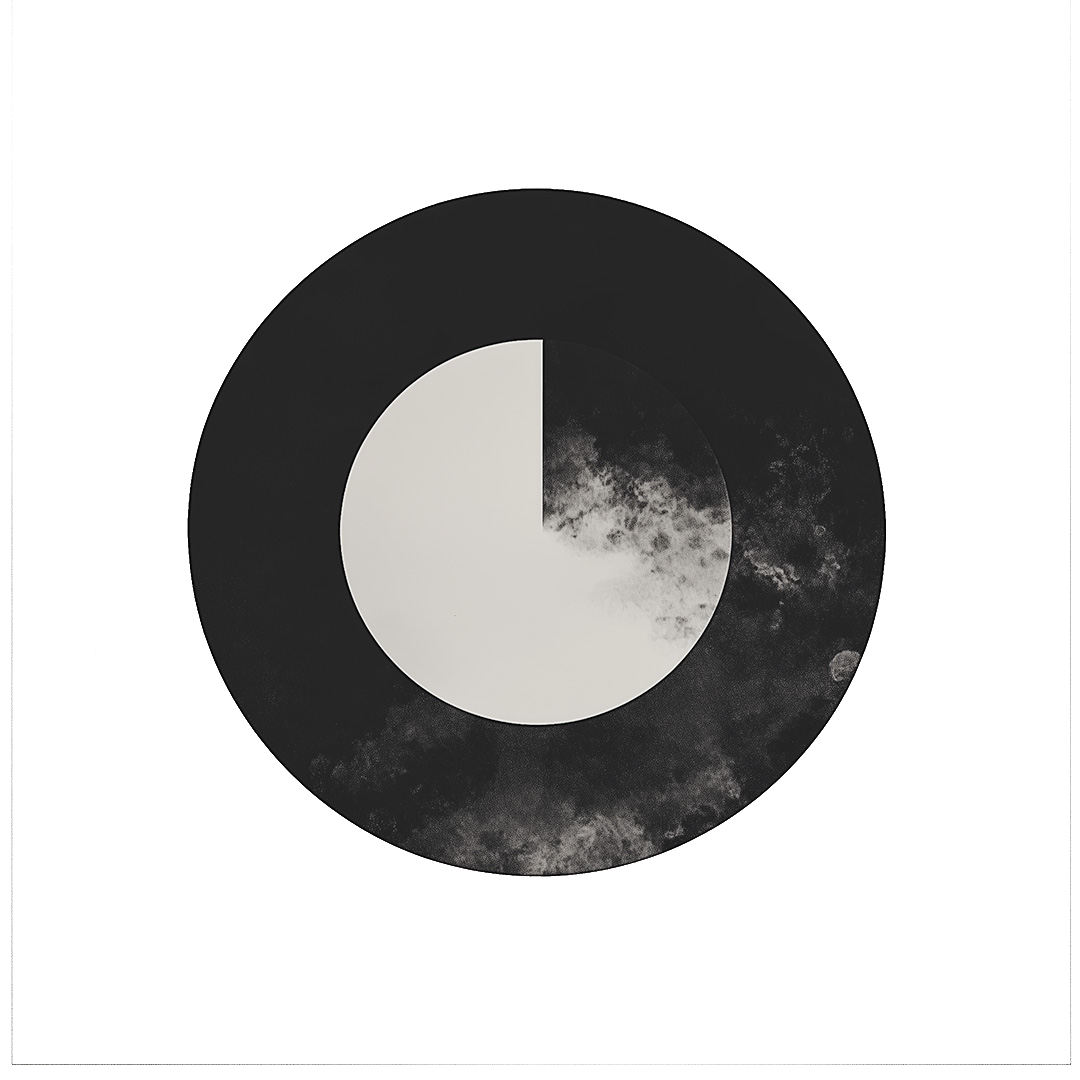OPENINGS
07 Learning to Fly
About this Opening
Established art curator Noah Stolz took us through brilliant analysis on the importance of the peripheral in art, and reminded us that it was in Ticino that both Eranos and Monte Verità provided grounds for some of the most extraordinary and challenging minds, thinkers, mythologists, choreographers, philosophers and psychologists the 20th century produced. Doubly stimulating was Markus Schnabel's presence, now a fixture at our openings, setting a critical and profound tone regarding language, post-structuralism and insight into the argument of technology as a vehicle for human evolution, from practical to spiritual.
The presence of Aymeric Nager and Nataliya from Zurich was especially important. Aymeric has curated and produced art encounters from independent high-quality programs to, most recently, Fondation Beyeler in Basel. Aymeric's thoughts connected to the boomerang as an instrument and the hand as the first grasp of technology. In German, we use the word "begreifen" to mean "to understand," but its root is "greifen" – to grasp, to hold. So "Begriff" (concept) originally comes from this physical act of grasping. The hand, in that sense, is our first thinking organ, it shapes our ability to form concepts, language, and later: tools.
Heidegger actually explored this idea – the human as a being that uses the hand not just for survival but for shaping the world and forming meaning. Somewhere, Sloterdijk even describes modern man as a kind of "chirurgischer Mensch" (surgical human), operating through precise, intentional gestures. For centuries, our technologies have followed what the hand can grasp – especially the round: wheels, spheres, engines. This logic shaped not only our tools, but our world: the city, the car, the roads, even our aesthetic ideals. But what if other shapes had defined us? The boomerang as a model, with its spiral motion and returning curve, seems to suggest another kind of relationship to space, to motion, and perhaps even to knowledge. The boomerang holds the promise of a shift — a technology that goes beyond the "greifbare" (the graspable), and opens a new dimension of orientation, movement, and even imagination.
Kathleen Rogers' interventions were filled with care and extraordinary detail. A master class in understanding the subtleties that characterize her art and constant research, provided at length through a written paper accessible in detail below.
Held Saturday, June 14th, LEARNING TO FLY was an intimate yet extraordinarily deep exchange. 30 years after the original The Incident symposium at the Belluard fortress in Fribourg, the Generative Center proposed a tribute to the unique exchange that brought together artists, scientists and practitioners the likes of James Turrell, Terence McKenna, Jacques Vallée, Roy Ascott, Kathleen Rogers, Keiko Sei, Jeremy Narby, Kristine Stiles, Budd Hopkins, Marko Peljhan, Rod Dickinson, Robert A. Fischer, Sergius Golowin, H. R. Giger, Michael R. Heim. Working in close collaboration with VR pioneer, artist and professor Kathleen Rogers, as well as original curator Rob La Frenais, Learning to Fly focused on the work of Swiss artist and ethnobotanist Robert A. Fischer. Fischer's intense and prolific work was presented in the context of his work with Australia's First Nations. In the presence of Fischer's daughter Jessie Fischer, the opening provided a fascinating and intimate tone. Coming from an opening debate on the importance and significance of the periphery, the center, novelty vs. renewal, Learning to Fly took us to important heights.
Established art curator Noah Stolz took us through brilliant analysis on the importance of the peripheral in art, and reminded us that it was in Ticino that both Eranos and Monte Verità provided grounds for some of the most extraordinary and challenging minds, thinkers, mythologists, choreographers, philosophers and psychologists the 20th century produced. Doubly stimulating was Markus Schnabel's presence, now a fixture at our openings, setting a critical and profound tone regarding language, post-structuralism and insight into the argument of technology as a vehicle for human evolution, from practical to spiritual.
The presence of Aymeric Nager and Nataliya from Zurich was especially important. Aymeric has curated and produced art encounters from independent high-quality programs to, most recently, Fondation Beyeler in Basel. Aymeric's thoughts connected to the boomerang as an instrument and the hand as the first grasp of technology. In German, we use the word "begreifen" to mean "to understand," but its root is "greifen" – to grasp, to hold. So "Begriff" (concept) originally comes from this physical act of grasping. The hand, in that sense, is our first thinking organ, it shapes our ability to form concepts, language, and later: tools.
Heidegger actually explored this idea – the human as a being that uses the hand not just for survival but for shaping the world and forming meaning. Somewhere, Sloterdijk even describes modern man as a kind of "chirurgischer Mensch" (surgical human), operating through precise, intentional gestures. For centuries, our technologies have followed what the hand can grasp – especially the round: wheels, spheres, engines. This logic shaped not only our tools, but our world: the city, the car, the roads, even our aesthetic ideals. But what if other shapes had defined us? The boomerang as a model, with its spiral motion and returning curve, seems to suggest another kind of relationship to space, to motion, and perhaps even to knowledge. The boomerang holds the promise of a shift — a technology that goes beyond the "greifbare" (the graspable), and opens a new dimension of orientation, movement, and even imagination.
Kathleen Rogers' interventions were filled with care and extraordinary detail. A master class in understanding the subtleties that characterize her art and constant research, provided at length through a written paper accessible in detail below.
Manuela Bernasconi took us again to the body - embodiment through the grip of raw movement, to re-registered music and voice stimulus, and a big shout out to Michel Cinc for a wonderful live music DJ performance with visuals by VJ Felix A. Bachmann. Learning to Fly's opening day was charged with synchronistic connections.
Detailed information follows below.
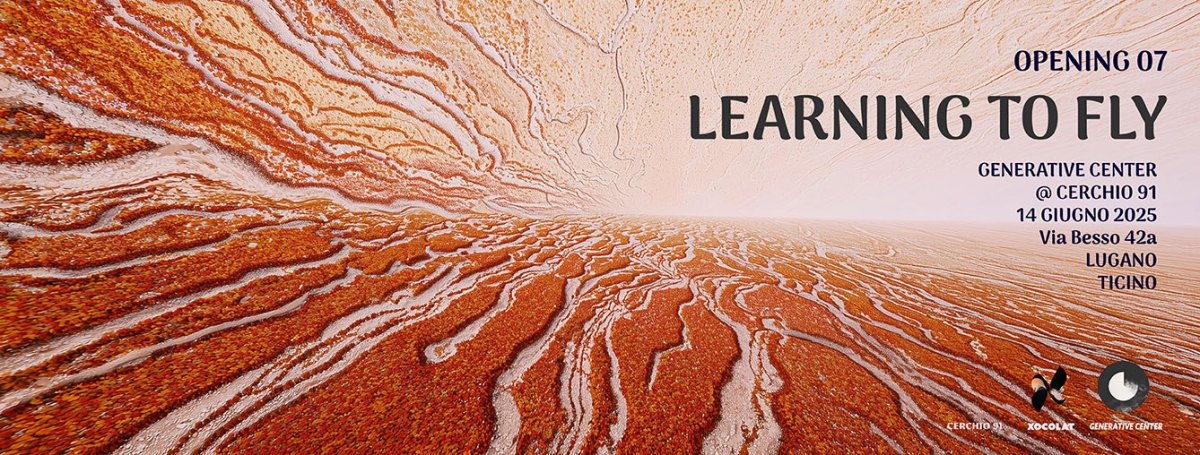
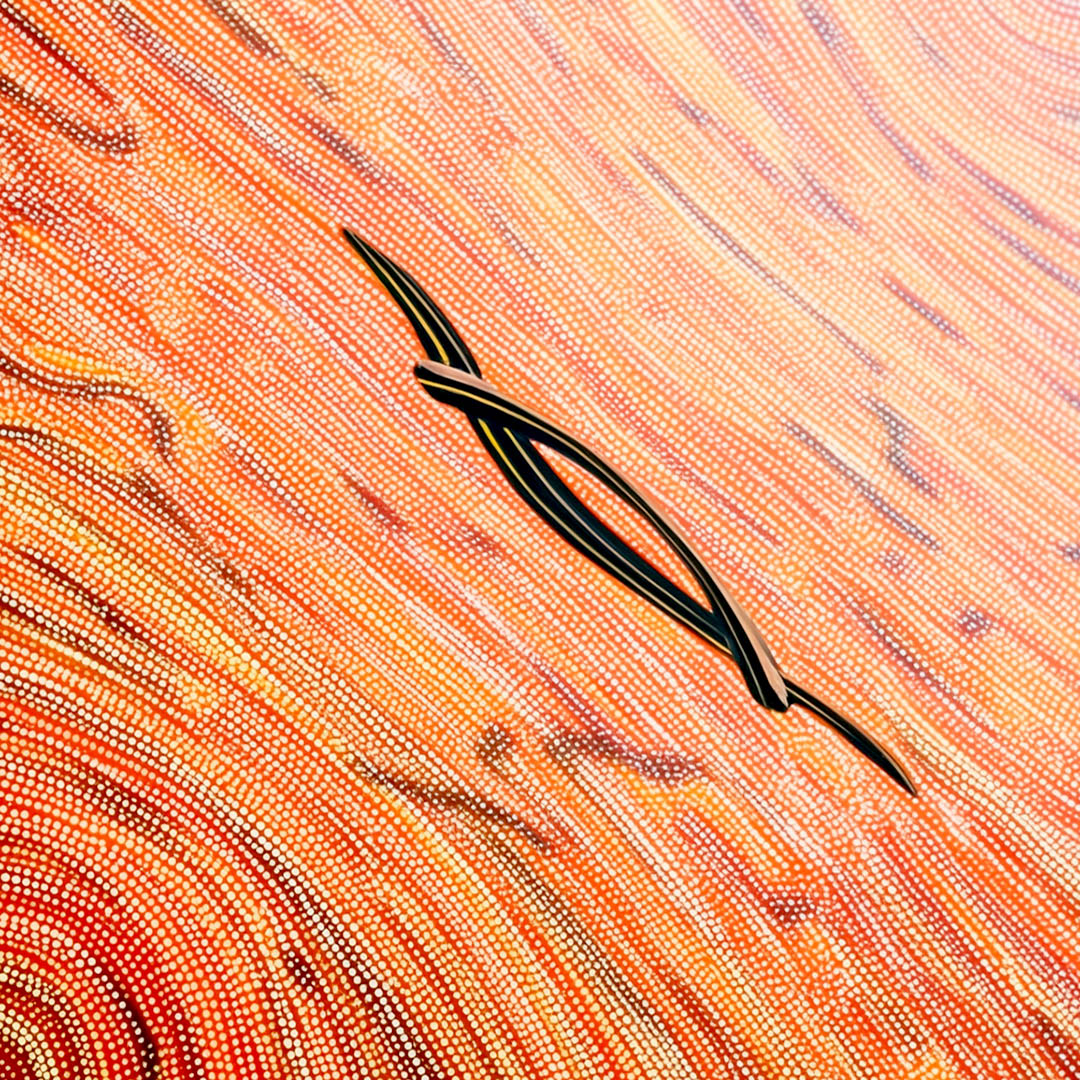
07LEARNING TO FLY
Technological Evolution and Consciousness
A tribute to "The Incident" symposium 30 year anniversary
ROUND TABLE, CO-CREATION, PERFORMANCE, OPEN DIALOGUE, EXHIBITION
Saturday, June 14, 2025
Generative Center
@ Cerchio 91
Via Besso 42 a,
6900, Lugano Besso
Switzerland
6900, Lugano Besso
Switzerland
14.30 - 20.00 | FULL PROGRAM BELOW
INTRODUCTION
"By looking to archaic origins, we can teleport ourselves further down our own evolutionary path - only in the opposite direction."
- Robert A. Fischer (1942-2001)
- The Wild Media. A Media-Anthropological Evaluation of the Technologization of Aboriginal Communication Modes 1993/Central Library Zurich, Fischer Archives.
Technology as Spiritual Transformation: Indigenous Wisdom and the Art of Return
In humanity's perpetual quest for transcendence, technology reveals itself not merely as material progress but as a profound gateway to spiritual and evolutionary transformation. Robert A. Fischer's revelatory ethnographic fieldwork among the Pintupi First Nation people in Australia illuminated the sacred correspondence between technological creation and consciousness evolution, fundamentally challenging Western narratives of progress.
Fischer developed core insights into how the Pintubi First Nations development of the boomerang transcended its identity as mere hunting tool, revealing itself as a sophisticated technology of return—physical in its inevitable arc back to the thrower, spiritual in its connection to country and ancestors, and ontological in its embodiment of cyclical existence over linear progression. While Western civilization became entranced by increasingly complex external mechanisms designed to dominate and extract from the natural world, Indigenous peoples had already mastered something far more profound: the conscious navigation of space, time, and the sacred relationships that weave through all existence.
Fischer's research dismantles the colonial assumption that Indigenous peoples had somehow 'stopped' technological development. Instead, he discovers that the Pintupi had achieved something Western civilization has yet to comprehend: a revolutionary understanding of technology not as material domination, but as a gateway to consciousness itself.
Fischer's Key Philosophical Insights
Technology as Spiritual Instrument
Fischer observed that the Pintupi discovered what Western science barely comprehends: "The soul, they discovered, could transport itself through space and time, with at least as much magic as the boomerang. The outer technology found an inner correlate." For Fischer, technology's deepest purpose is not material domination but consciousness cultivation.
The Evolution of Artistic Practice
Fischer identifies how contemporary art mirrors this shift: "We are not confronted anymore with the sequential linear production of the object of art as a strategy of finality. The emphasis is on the process, structure, model and architecture of art making." He sees this movement from product to process as reflecting Indigenous understanding of creation as ceremony rather than commodity.
Fischer identifies how contemporary art mirrors this shift: "We are not confronted anymore with the sequential linear production of the object of art as a strategy of finality. The emphasis is on the process, structure, model and architecture of art making." He sees this movement from product to process as reflecting Indigenous understanding of creation as ceremony rather than commodity.
The Artist as Evolutionary Engineer
Fischer envisions artists as consciousness engineers: "The artist's task will be more and more to be the engineer who designs the very models of future communication." He argues this requires not technological advancement but return—to reciprocal relationship with land, to awareness as primary technology, to Indigenous wisdom.
Fischer envisions artists as consciousness engineers: "The artist's task will be more and more to be the engineer who designs the very models of future communication." He argues this requires not technological advancement but return—to reciprocal relationship with land, to awareness as primary technology, to Indigenous wisdom.
Fischer’s Legacy in Contemporary Digital Culture
For Fischer, the boomerang's arc became a metaphor for evolution itself: not linear progression but cyclical return, carrying ancient wisdom into future transformation. In relation to western digital culture in 1992, Fischer wrote: "The image in and of itself receives a position within a network of information, which removes its priority position in the information process." He had an early understanding of how digital networks would fundamentally change visual culture and information hierarchy, anticipating many current debates about digital media's impact on culture: how algorithms reshape society and culture, how traditional knowledge systems adapt to digital platforms, and how artistic practices can serve as research methodologies for understanding technological change. His approach to media ethnology as both critical analysis and creative practice informs the opening discussions for Technology as Spiritual Transformation: Indigenous Wisdom and the Art of Return towards a way of understanding the current digital moment.
PROGRAM
14:00 | Doors open
14:30 - 16:00
ROUND TABLE: THE EPISTEMOLOGY OF THE PERIPHERAL
A round table exploring art curation's past, present, and future potentials, investigating how marginal perspectives reshape our understanding of technological and cultural evolution.
A round table exploring art curation's past, present, and future potentials, investigating how marginal perspectives reshape our understanding of technological and cultural evolution.
Focus on author Michael Heim's work on this subject and out of his extensive writing about the original "The Incident" symposium at Belluard Fribourg in 1995:
"There is something like a peripheral vision by which humans glimpse their future from the corners of the eye. Peripheral knowledge of the future does note register clearly on the central focus. (...) The biospsychic body continually collects information about present trends and future adjustments; it constantly projects patterns for adaptation; it alerts us through dreams, art, and creative contemplation. For the mind's central focus, the truth is out there; for the peripheral mind, the truth has already landed - within."
“Virtual Realism”, Michael Heim.
Opening: Rob La Frenais (UK, France)
In Presence Participants: Noah Stolz, Felix Bachmann, Kevin Merz, Aymeric Nager, Manuela Bachmann Bernasconi, participants TBC
Virtual Participants: Kathleen Rogers (UK) -Visual Playground
Virtual Participants: Kathleen Rogers (UK) -Visual Playground
Pre-Recordings: Sarah Sparkes (UK)
Dance Performance: Manuela Bachmann Bernasconi (CH)
16:30 - 18:00
COLLECTIVE CREATION: THE BOOMERANG EFFECT
A dive into Robert A. Fischer's artwork, research, and technological vision, exploring how ancient technologies mirror our contemporary search for meaning.
COLLECTIVE CREATION: THE BOOMERANG EFFECT
A dive into Robert A. Fischer's artwork, research, and technological vision, exploring how ancient technologies mirror our contemporary search for meaning.
Key Points:
- The boomerang as a metaphor for technological and spiritual evolution
- Stopping material development to concentrate on "mental technologies"
- Electronic devices as an "intermediate stage towards a next step in human evolution"
18:20 | Live VJ and DJ performance from material generated through collective creation.
DJ CINQ
An immersive experience exploring the boundaries between physical motion, technological representation, and spiritual projection.
19:30 | Music and exchange.
Closing Reflection
"We should consider our new electronic toys as an intermediate stage towards a next step in human evolution."
"We should consider our new electronic toys as an intermediate stage towards a next step in human evolution."
Robert A. Fischer, "Learning to Fly", The Incident 1995 conference, from the archives.
Ultimately, this opening invites participants to reimagine technology not as a linear progression of material artifacts, but as a dynamic, transformative process of consciousness—a perpetual "learning to fly" that transcends the limitations of our current understanding.
Kathleen Rogers Discussion Paper: The Epistemology of the Peripheral: Water Memory, Posthuman Assemblages, and Cultural Evolution From Counterculture to "The Memory of Water" (1995)
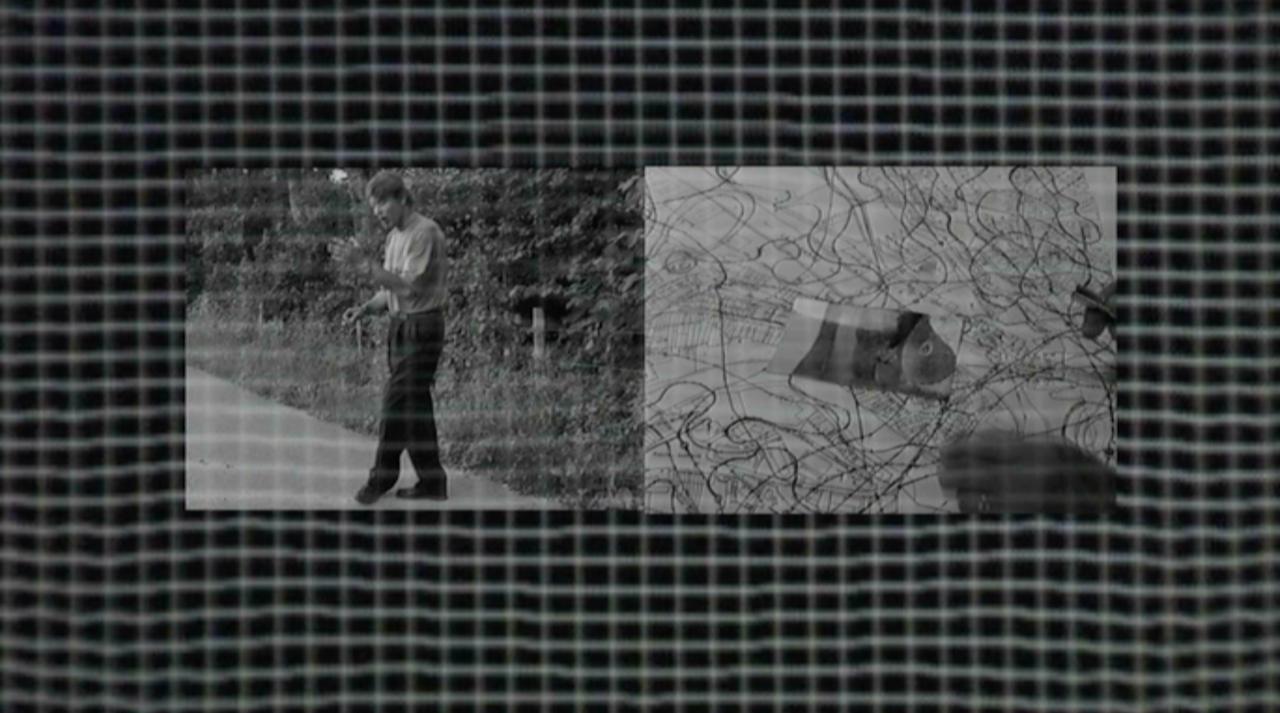
SCREEN EXHIBITION:THE MEMORY OF WATER by KATHLEEN ROGERS
The Memory of Water - Part of Water Consciousness
The Memory of Water installation, was a component of the larger series entitled, Water Consciousness, conceived for The Incident 1995 and commissioned for the Belluard Bollwerk International Festival. The series included the installation and encompassed remote UK and local Fribourg dowsing experiments and workshop events alongside a collaborative word performance work with the Swiss anthropologist, author of The Cosmic Serpent Jeremy Narby.
The installation functioned as a conceptual fluidic databank and quantum computer, manifested as an extensive floor-based work constructed from hundreds of water samples. These samples were collected by young volunteers from medieval reservoirs, historic fountains, and the Sarine River throughout Fribourg, creating a spiritual cartography that traces the city's energetic infrastructure and design topology rooted in ancient systems of underground springs and ley lines.
The visual component is an algorithmically generated wave-form patterns derived from mathematical hydrodynamic principles. Dual projection systems created kinetic light phenomena and electromagnetic field interactions across the water surface. The immersive sonic environment incorporates dynamic field recordings of flowing water and visceral rhythmic elements, establishing a multi-sensory dialogue between natural and technological systems. Documentation, maps and recordings formed part of the exhibited works.
This work explores the intersection of memory, landscape, and consciousness through the medium of water, positioning the liquid as both archive and active participant in the creation of meaning.
The work was made possible with the time support and valuable local connections provided by Incident photographer Eliane Laubsher and Adrien Laubsher.
The Memory of Water installation, was a component of the larger series entitled, Water Consciousness, conceived for The Incident 1995 and commissioned for the Belluard Bollwerk International Festival. The series included the installation and encompassed remote UK and local Fribourg dowsing experiments and workshop events alongside a collaborative word performance work with the Swiss anthropologist, author of The Cosmic Serpent Jeremy Narby.
The installation functioned as a conceptual fluidic databank and quantum computer, manifested as an extensive floor-based work constructed from hundreds of water samples. These samples were collected by young volunteers from medieval reservoirs, historic fountains, and the Sarine River throughout Fribourg, creating a spiritual cartography that traces the city's energetic infrastructure and design topology rooted in ancient systems of underground springs and ley lines.
The visual component is an algorithmically generated wave-form patterns derived from mathematical hydrodynamic principles. Dual projection systems created kinetic light phenomena and electromagnetic field interactions across the water surface. The immersive sonic environment incorporates dynamic field recordings of flowing water and visceral rhythmic elements, establishing a multi-sensory dialogue between natural and technological systems. Documentation, maps and recordings formed part of the exhibited works.
This work explores the intersection of memory, landscape, and consciousness through the medium of water, positioning the liquid as both archive and active participant in the creation of meaning.
The work was made possible with the time support and valuable local connections provided by Incident photographer Eliane Laubsher and Adrien Laubsher.
OTHER WORKS EXHIBITED @ GENERATIVE CENTER
- The Incident tapes / sound loops of the original Incident conferences
- Erik Davis interview at Monte Verità

FEATURED ARTIST:JACOB LOGOS
AUSTRALIA
AUSTRALIA
"As an artist living and working in regional South Australia, my practice attempts to navigate the intersections of place, mythology, storytelling, and technology. Through many collaborative projects involving Kaurna language and cultural knowledge, I’ve sought to explore how my own ancestral narratives and contemporary mediums might coalesce.
The country itself is energetic, mysterious, and jaw-droppingly beautiful. By mysterious, I mean there is still much to learn—much that has been lost. As a kid, my favourite Dreaming stories were those of the Yowie, the Rainbow Serpent, and the giant megafauna. The paintings I encountered—“We’ll share the story, but we’ll hide its sacred core”—always seemed to me like evidence of something more: perhaps astral projection, or other ways of seeing and travelling through land."
The country itself is energetic, mysterious, and jaw-droppingly beautiful. By mysterious, I mean there is still much to learn—much that has been lost. As a kid, my favourite Dreaming stories were those of the Yowie, the Rainbow Serpent, and the giant megafauna. The paintings I encountered—“We’ll share the story, but we’ll hide its sacred core”—always seemed to me like evidence of something more: perhaps astral projection, or other ways of seeing and travelling through land."
Jacob Logos, Adelaide, Australia.
Additional Information
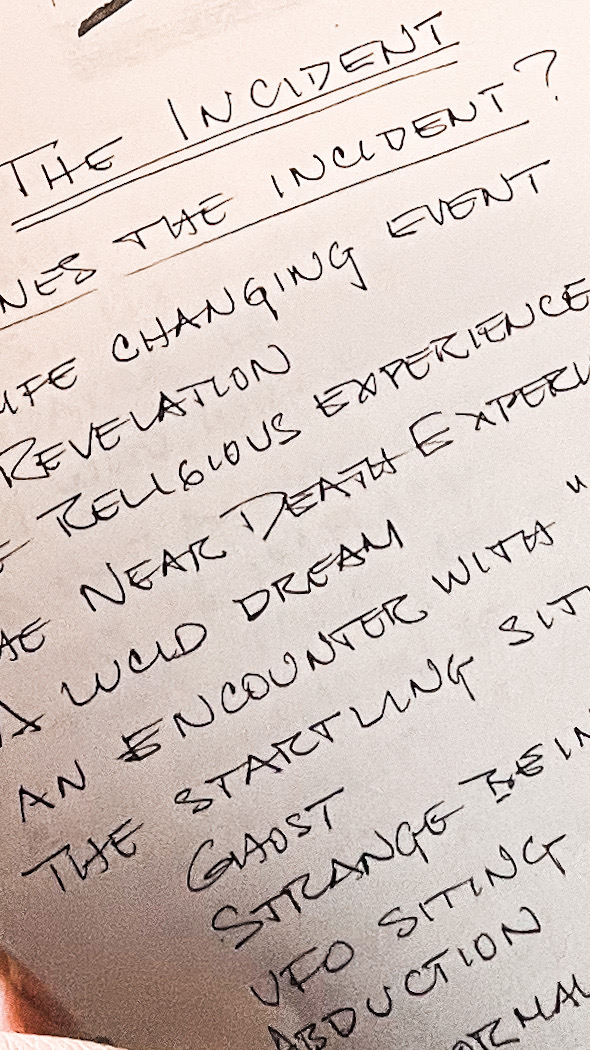
opening conference
by James Turrell
ABOUT THE INCIDENT
In 1994, art curator and video artist Rob La Frenais proposed himself as Artistic Director for Festival Belluard Bollwerk a small yet already renowned performance festival in the mediaeval city of Fribourg / Freiburg. Founded in 1157 by Berthold IV, Duke of Zähringen, the City of Fribourg has been set at extraordinary vertical discrepancies, shoring the serpentine Sarine river. Set at the Röstigraben, cultural boundary between the German and French-speaking Switzerland, Fribourg has one of the least visibly unpolluted mediaeval centres. It is surrounded by nature, carved into the molasse sedimentary stone. This gem of a city offers a feeling of personal intimacy like no other. Upon interest by the Belluard Bollwerk committee, La Frenais then visited Fribourg, and was engaged as Artistic Director for the 1995 edition. He immediately contacted James Turrell, who accepted to help curate the symposium, which they entitled “The Incident”.
The Incident was to become an unprecedented phenomenon, never to have been experienced in Fribourg and, for reasons still unclear, never to happen again.
“People in Fribourg had never seen anything like this. That was one of its beauties. It was about life on earth, mysteries, life in the cosmos, no frontiers between science and art, religion, philosophy, the whole thing just landed. It marked the people’s spirits and minds. “Marqués les esprits” in French. I think it galvanised those who participated to sort of believe that one could take these things seriously and get people interested in it and what is this stuff- the mysteries of life.”
Jeremy Narby, author and activist.
Major figures from the arts, technology and science alongside researchers in unexplained phenomena, covered areas from parapsychology, ufology, dreams, and other subjects that concerned the exploration of human consciousness. Invitees included James Turrell, Terence McKenna, Jacques Vallée, Urike Rosenbach, Roy Ascott, Michael Lindemann, Kathleen Rogers, Keiko Sei, Jeremy Narby, Kristine Stiles, Budd Hopkins, Marko Peljhan, Rod Dickinson, Robert A. Fischer, Sergius Golowin, H. R. Giger, Michael R. Heim, Robert Bauval. The Incident brought together parallel debates from often differing fields, such as the comparison of cyberspace, virtual reality and artificial life with studies of the nature of religious experience, shamanism, and dreaming.
A second symposium was held at the Institute of Contemporary Art, in London, UK in 1996. It examined the meaning of phenomena that exists in the realm of the “unexplained” from different angles. In addition to a number of participants of the first symposium, it included Robert Bauval, David Peat, Luis Eduardo Luna, Linda Montano and Minette Lehmann.
The Incident was to become an unprecedented phenomenon, never to have been experienced in Fribourg and, for reasons still unclear, never to happen again.
“People in Fribourg had never seen anything like this. That was one of its beauties. It was about life on earth, mysteries, life in the cosmos, no frontiers between science and art, religion, philosophy, the whole thing just landed. It marked the people’s spirits and minds. “Marqués les esprits” in French. I think it galvanised those who participated to sort of believe that one could take these things seriously and get people interested in it and what is this stuff- the mysteries of life.”
Jeremy Narby, author and activist.
Major figures from the arts, technology and science alongside researchers in unexplained phenomena, covered areas from parapsychology, ufology, dreams, and other subjects that concerned the exploration of human consciousness. Invitees included James Turrell, Terence McKenna, Jacques Vallée, Urike Rosenbach, Roy Ascott, Michael Lindemann, Kathleen Rogers, Keiko Sei, Jeremy Narby, Kristine Stiles, Budd Hopkins, Marko Peljhan, Rod Dickinson, Robert A. Fischer, Sergius Golowin, H. R. Giger, Michael R. Heim, Robert Bauval. The Incident brought together parallel debates from often differing fields, such as the comparison of cyberspace, virtual reality and artificial life with studies of the nature of religious experience, shamanism, and dreaming.
A second symposium was held at the Institute of Contemporary Art, in London, UK in 1996. It examined the meaning of phenomena that exists in the realm of the “unexplained” from different angles. In addition to a number of participants of the first symposium, it included Robert Bauval, David Peat, Luis Eduardo Luna, Linda Montano and Minette Lehmann.
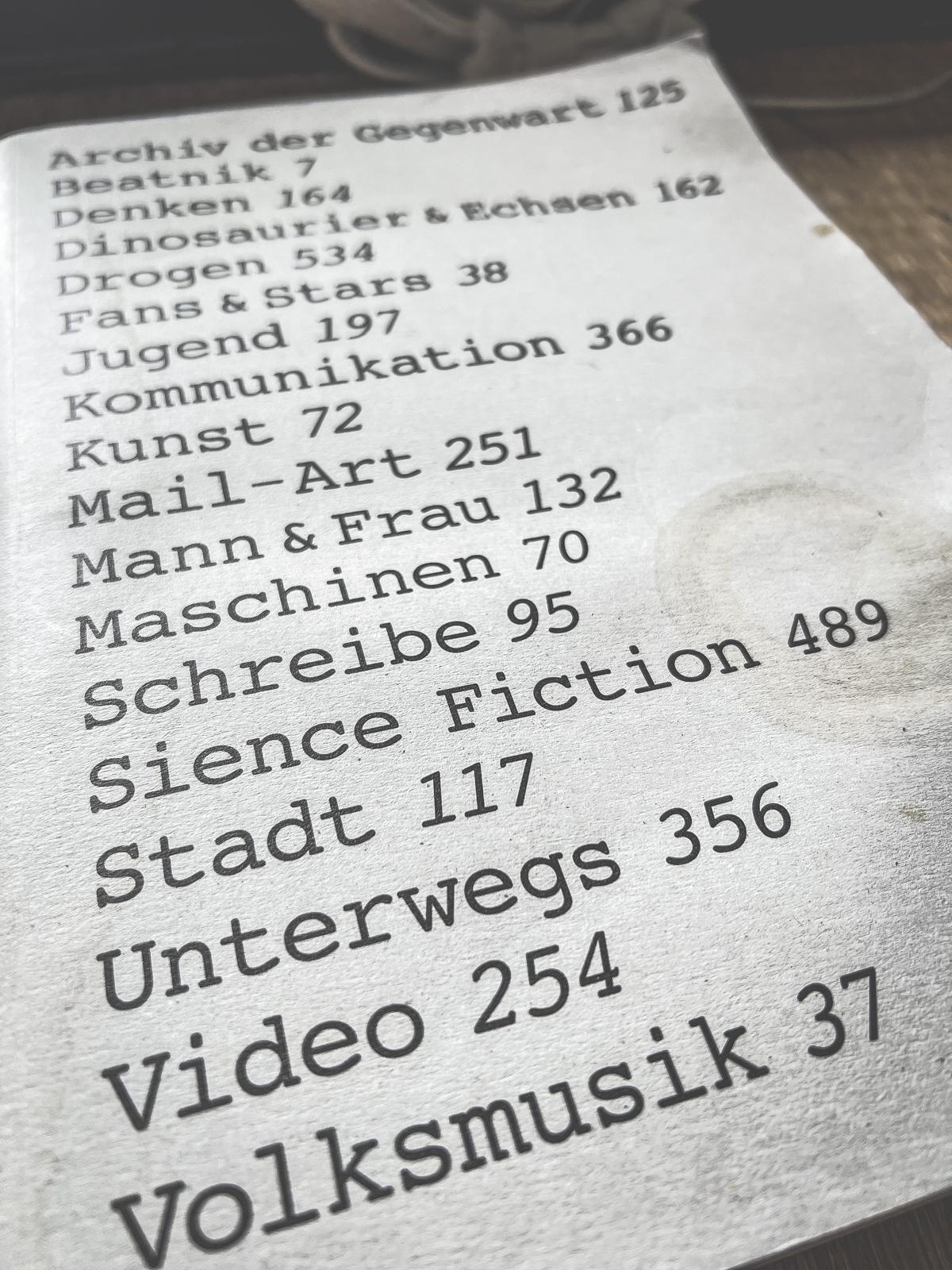
Robert A. Fischer
Edition Patrick Frey No.95
ROBERT A. FISCHER BIO
Robert A. Fischer (1942–2001) was a Swiss author, art critic, artist, media ethnologist, and media anthropologist whose pioneering research spanned the intersections of media, ethnology, and culture. His multifaceted approach combined media anthropology, theoretical frameworks, and cross-cultural research, beginning with his studies in Applied Psychology at the University of Zurich in 1963. Fischer was prolific creatively, publishing poetry fanzines like The Cthulhu News (1966–67) and music fanzines including Minimal Rock (1976–1982). Primarily working as a researcher, art critic, journalist, author, and media artist, he returned to studies in 1989, completing a degree in ethnology under Michael Oppitz at the University of Zurich.
In the 1960s, Fischer studied Sanskrit in India and had spent time in Nepalese ashrams, experiences that deeply shaped his thinking. His later fieldwork with the Pintupi First Nation people in Central Australia forged a unique synthesis between his knowledge of Eastern philosophical traditions, Western academic ethnology, and emerging digital networked technology. Fischer was particularly interested in how traditional modes of cultural communication were being transformed by new technologies—themes that are especially relevant today, with the rise of AI. His work laid important groundwork for understanding how technology reshapes human communication and cultural expression across diverse societies.
A selection of his influential contributions to artistic media anthropology are collected in Ich/Buchstabendrescher, etc. (2011), published posthumously. Fischer’s extensive archive was entrusted to the Central Library Zurich in 2016, preserving his legacy as a vital thinker at the crossroads of culture, media, and technology.
